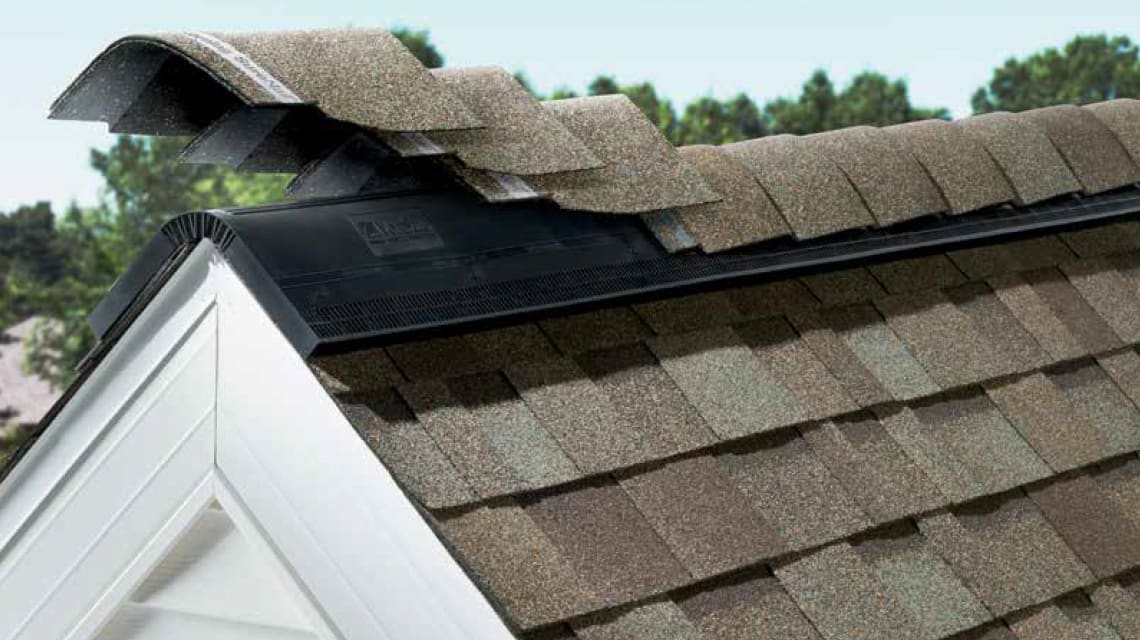Hip and Ridge Caps. vs. 3-Tab Shingles: Which is Best For Ridge Capping?
A roof is a significant investment for your home. When getting a roof replacement, you want to ensure all products used are high-quality so you are protected against further leaks and damage.
However, a roof replacement can be expensive, leading homeowners and contractors to use lower-quality materials to save on costs. This includes using 3-tab shingles instead of the recommended hip and ridge caps for ridge capping.
Rescue My Roof has been working with homeowners for over a decade, helping them get roofs that keep their homes and families safe.
Today, we’ll walk you through the differences between hip and ridge caps and 3-tab shingles and why we recommend one over the other for ridge capping. Ultimately, you’ll walk away with the knowledge that will give you the best home protection.
What Are Hip and Ridge Caps?

Almost every sloped roof has a ridge at the top where two adjoining slopes meet, and many roof designs include sloped ridges (known as hips) where the roof planes meet at an angle. A Ridge cap covers the hip and ridge of the roof, where two adjoining slopes come together.
This cover can be made of metal, tile, shake, composition shingles, etc. Ridge cap shingles play a critical role in keeping rain and melting snow from leaking into your home, and due to the nature of installation (shingles bent to cover the peak), ridge cap shingles can deteriorate quicker than the rest of the roof surface.
Roofing contractors may cut 3-tab shingles and bend them to look like hip and ridge caps as a cost-effective alternative to hip and ridge caps. However, 3-tab shingles are designed to lay flat and are thinner. They will deteriorate more quickly because they are not designed to bend and leave your home at risk for leaks.
As hip and ridge caps are thicker, hold their bent shapes, and leave less room for human error, hip and ridge caps are the better option for finishing your roof.
3 Reasons You Need Hip and Ridge Caps
Hip and Ridge caps are placed at the most vulnerable points of your roof. These areas are prone to damage from extreme weather conditions. Here’s how hip and ridge caps protect your home and why you should utilize them over 3-tab shingles.
1. Capping Protects the Roof From Wind Damage
If you have a hip or ridge cap on your roof, it’s there for a reason. The purpose of these roofing components is to provide extra protection to the most exposed part of your home.
Wind can cause a lot of damage to both roofs and walls. You can purchase and install specially made hip and ridge cap shingles to protect the exposed parts from wind damage by adding an extra layer between the roofing materials, attic, and the weather.
These specially-made hip and ridge cap shingles contain specific adhesives that regular shingles don’t have so that they can protect your home from strong wind gusts. Also, they shield all layers under it from exposure so that nothing gets damaged during heavy rainstorms or strong winds.
2. Hip and Ridge Caps Prevent Roof Leaks and Pest Infestation
Also called roof capping, the hip and ridge caps keep water from entering your attic through the roof structure. These caps protect the roof sheathing, rafters, trusses, and attic from rot, mold, and algae.
The caps also fill gaps between the shingles and rafters to prevent pests and rodents from entering the attic. Insects and animals tend to find their way into your attic through the holes and gaps in your roof, leading to expensive repairs.
3. Roof Capping Helps in Ventilating Your Home
Ridge caps help in ventilating your home. Some ridge caps come with ridge vents, an exhaust vent that pushes the hot air out of your attic. Ventilation is essential in preventing rot, rust, mold, and algae growth in your roof and attic.
Ridge vents are paired with soffit vents to form a complete ventilation system for your roof and attic. When ridge vents throw out hot and stale air, soffit vents intake fresh, cooler air.
There are multiple ridge vents, but the most popular and low-maintenance ones are shingle-over ridge vents and a ridge cap & vent system. Both offer the same function but differ in cost and style.
What’s Better: 3-Tab Shingles or Hip & Ridge Caps?
Using 3-tab shingles instead of Hip & Ridge caps could leave your home at risk for leaks and damage. As hip & ridge caps are designed to protect the ridges of your roof, it’s best to use them instead of 3-tab shingles.
Rescue My Roof uses Atlas Hip & Ridge Caps to provide the ultimate protection for your roof. You can contact us today to get a free estimate.


